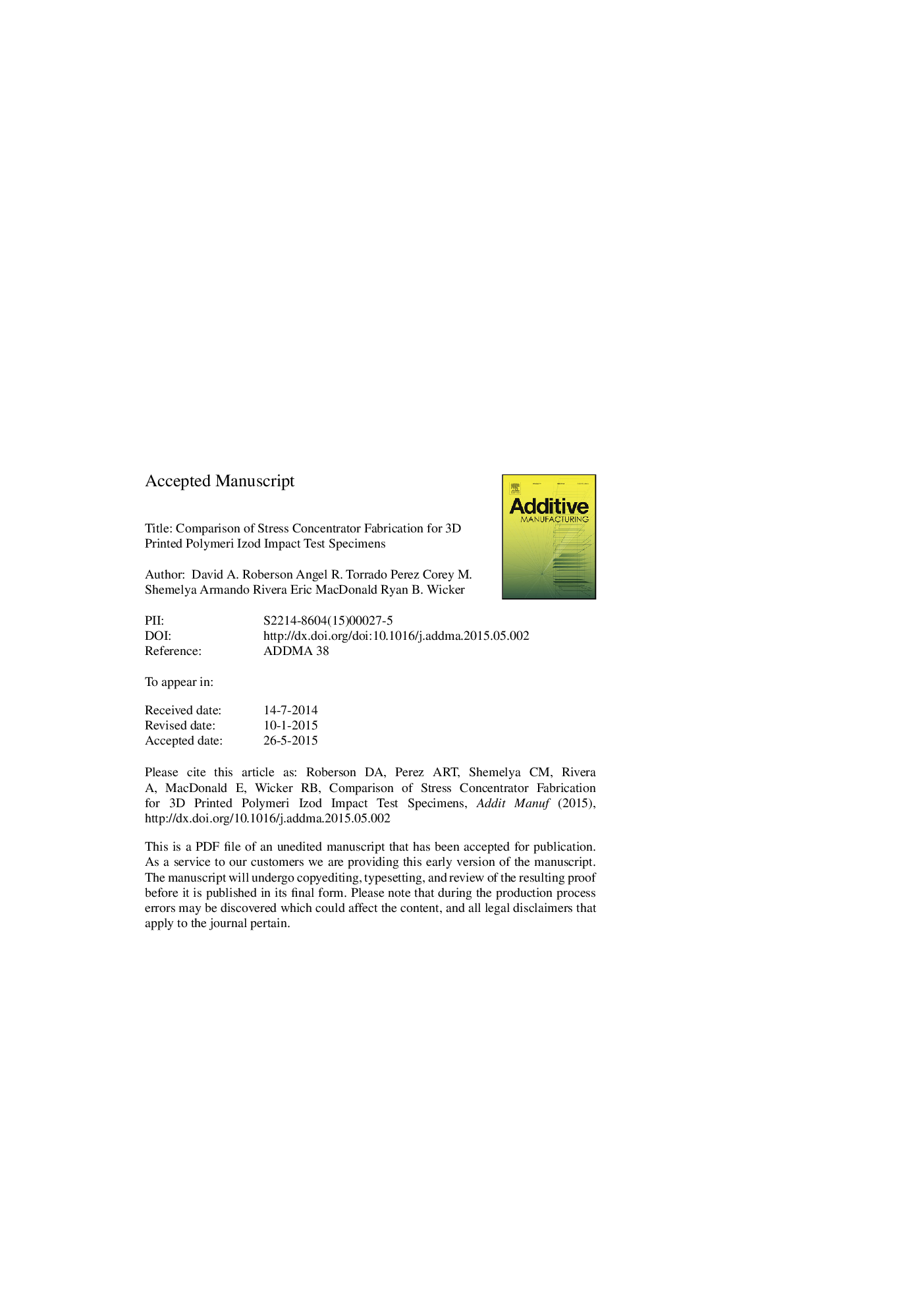| Article ID | Journal | Published Year | Pages | File Type |
|---|---|---|---|---|
| 7206038 | Additive Manufacturing | 2015 | 45 Pages |
Abstract
Izod impact test specimens were fabricated via a desktop grade material extrusion 3D printer process using ABS in four build orientations. The 3D printed impact test specimens were examined in order to compare the effect of stress concentrator fabrication on impact test data where two methods were used to fabricate the stress concentrating notch: (1) printing the stress concentrator; and (2) machining the stress concentrator where the dimensions of the notch matched those specified in the ASTM standard D256-10. In both test cases, sensitivity to build orientation was also observed. The sample sets with printed stress concentrators were found to be statistically similar to their counterparts with milled stress concentrators. The experiment was repeated again on a commercial grade material extrusion 3D printer using ABS, PC, PC-ABS, and Ultem 9085 and differences in impact test results were observed most notably when Ultem 9085 was tested. Scanning electron microscopy was utilized to perform fractograpy on impact test specimens to explore the effect of stress concentrator fabrication on the fracture surface morphology of the failed specimens. The work here demonstrates the need for materials testing standards that are specific to additive manufacturing technologies; as well as concluding that all-printed impact test specimens may offer the best representation of the impact characteristics of 3D printed structures.
Keywords
Related Topics
Physical Sciences and Engineering
Engineering
Industrial and Manufacturing Engineering
Authors
David A. Roberson, Angel R. Torrado Perez, Corey M. Shemelya, Armando Rivera, Eric MacDonald, Ryan B. Wicker,
